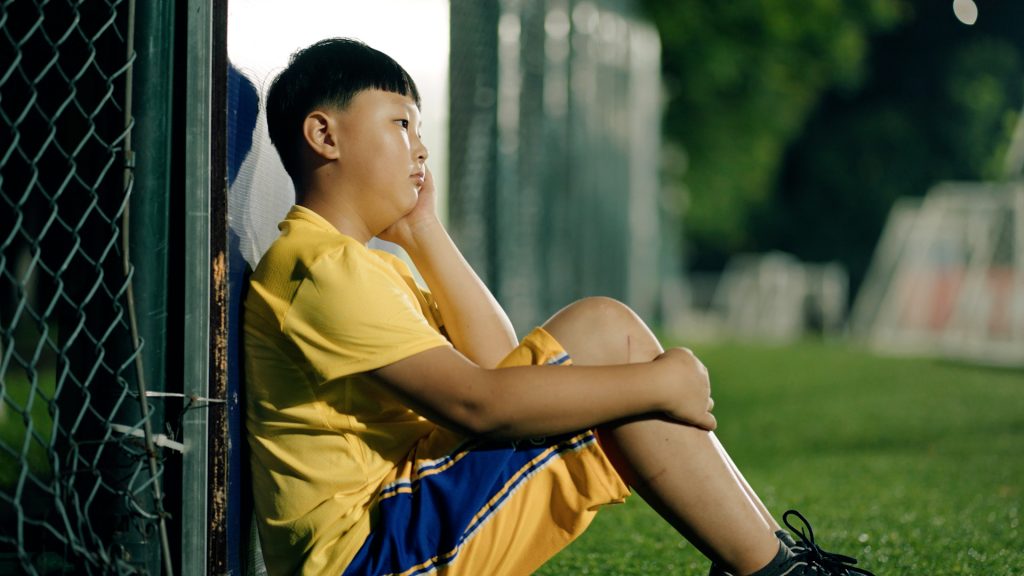‘Professionalization’ in youth sports is creating burnout, injured kids

Dr. Nirav Pandya is seeing the warning signs more frequently. Pre-teen kids are suffering injuries common to collegiate and professional athletes and burning out due to what many call the “professionalization” of youth sports.
“It truly is a business,” Pandya said. “Kids are choosing what sport they want to play at a young age, and they’re deciding, they want to go professional, they want to go to college. It’s no different than geometry or science. It’s about what sport am I going to play?”
How many kids quit sports before age 13?
Parents are usually the first to notice the signs of burnout: depression, apathy, exhaustion, aches and pains. A sport their kid once loved just isn’t fun anymore.
A study by the American Academy of Pediatrics published last year shows that 70% of kids drop out of organized sports by age 13, mostly due to injury or burnout. Pandya, a professor of orthopedic surgery and sports medicine at UC San Francisco, told Straight Arrow News that kids are sometimes allowed or even encouraged to do too much, too early.
“I see it with soccer, with baseball, these kids have been playing competitively since five, six, or seven, and then they drop out and they’re like these ‘washed up athletes’ heading into high school,” Pandya said. “And they talk about the days that they used to play competitive sports. It’s crazy.”
Pandya is concerned about how quitting sports at such a young age might impact a child’s long-term motivation and relationship with physical activity.
“What does this mean for these kids when they’re in their 30s, the 40s, their 50s?” Panda said. “Are they gonna stay active? Are they gonna wanna go work out? Or are their bodies just so beaten up from us as adults trying to give them this dream that most of these kids probably don’t want?”
What increases the risk of injury in youth sports?
Pre-teen athletes are seeing more serious injuries. The AAP study found 50% are a result of overtraining. ACL tears, shoulder and elbow damage, hip and ankle surgery — conditions that were once seen mostly in college or professional athletes who train year-round are now common-place in pre-teens.
“That’s what I’m seeing in my clinic,” Pandya said. “These kids come in and their joints, their ligaments are just torn apart because they’re trying to be professional athletes as opposed to just play sports, and their body just can’t handle it. There’s a reason why you’re growing. There’s a reason why you’re a kid. We’re trying to make them adults when their bodies aren’t ready for it.”
Somewhere along the line, play turned into pressure. Private coaching, travel teams and constant competition became all about performance and profit.
The perception that more kids can now make money in college or even at the high school level has become a major motivator for families to specialize in one sport, which can lead to burnout and injury. The social pressure to “keep up” has helped grow a booming business. According to a study by the Aspen Institute, parents spend an estimated $30 to $40 billion annually on youth sports fueled by a universal truth: parents want the best for their kids.
Matt Lisle, a motivational speaker and former coach at the college and pro level with over 3 million followers across his social media channels, uses travel baseball as an example of a sport that features a lot of specialization at a young age.
“I think the problem is we have so many people in the industry, they’re trying to make money,” Lisle told Straight Arrow News. “There’s a lot of voices that are saying, ‘hey, you got to specialize or he’s 10 and now he’s on a 10 and under team and he could make this national team if you pay $5,000.’ I think they’re selling this dream really, really early now, earlier and earlier.”
Why should ‘specialization’ be for a select few?
Both Coach Lisle and Dr. Pandya agree that pursuing a single dream should be reserved for kids who demonstrate exceptional talent and success beyond that of their peers. According to the NCAA, only 6% of high school athletes will play college sports, and less than 2% will earn a scholarship. For most young athletes, the better path is playing multiple sports and trying different positions early on, but Lisle admits it can be tough to let kids decide.
“I think about my son and I selfishly want him to get into golf just so we can play together and the opportunities in golf and all of those things,” Lisle said. “So, I’m kind of trying to keep an eye on it a little bit in the sense of like, what does he really love? What are the things that he gets excited about, and how can I foster that? And then just let him play all of them for as long as he can.”
Listening to what kids themselves are saying and feeling about their activities is an important step. Dr. Pandya does see some light at the end of the tunnel, as more parents see the data and adjust their own expectations but believes it may take years to reverse the trend.
“I do think we’re seeing more and more people understand it and recognize it,” Pandya said. “It’s just a matter of, in that moment when you have that choice to click on the $5,000 payment for your club team, are you gonna be like, is this really what’s best for our family?”
The report from the American Academy of Pediatrics reinforces the idea that if you want your kids to continue with a sport, they should enjoy it, perhaps even more than you enjoy watching them play it.
The post ‘Professionalization’ in youth sports is creating burnout, injured kids appeared first on Straight Arrow News.





